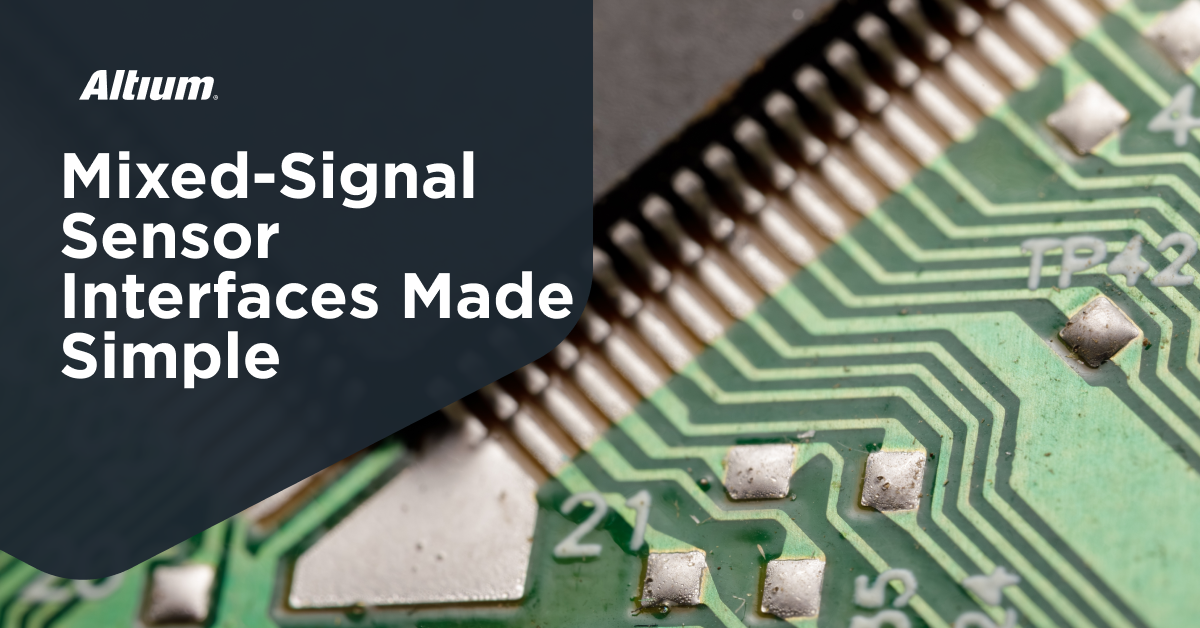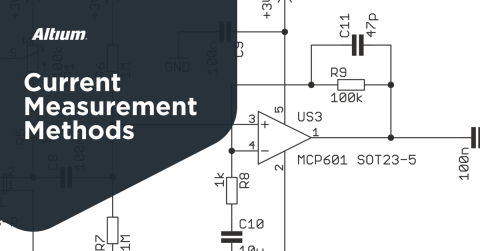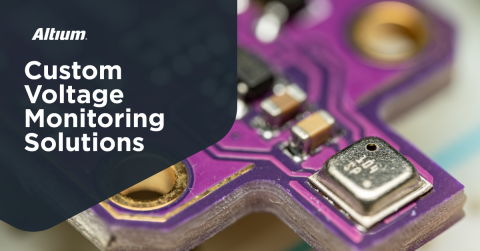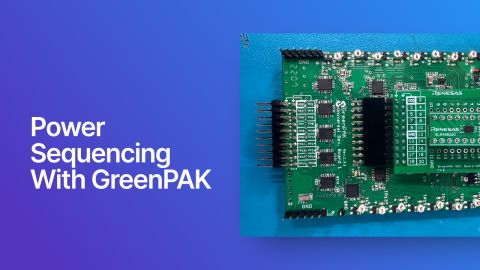Mixed-Signal Processor Interface Designs For Your PCB

Mixed signal processing offers a multitude of possibilities, but designing the interfaces to accomplish processing tasks has always been very difficult. Analog and mixed signal interfaces require discrete semiconductor components and ICs with a small number of amplifiers. Typically, if an ASIC is not available to do the job, a designer needs to cobble together dozens of components to build an equivalent analog interface. Once application code is run on a microcontroller and an ADC is introduced, you can then have the digital portion of your mixed signal interface.
Today, there is a better way thanks to programmable mixed signal processors. These processors take the same approach found in a CPLD or an FPGA with regard to programming custom logic, but they also provide a customizable analog front end. We'll show you what you can build and how these custom interfaces work in this article.
What's in the Interfaces in a Mixed Signal Processor?
Your typical digital interface is a simple I/O or buffer, which might be terminated if there is an impedance specification. The interface responds purely to an input voltage level in order to interpret an incoming bit stream. Mixed signal ASICs will incorporate digital interfaces and purpose-built analog interfaces into the same component, but the only customizability and functionality typically come from the digital portion of the component. Some analog functions are often adjustable based on an external resistor, capacitor, or voltage, but there may not be any customization beyond this.
Programmable mixed signal components are totally different. ASICs have fixed functions built into the analog interface, and essentially zero reprogrammability except what is defined in the digital section in the silicon. Programmable mixed signal processors allow the user to configure the parameters in the analog interface, either as hard-coded values or by adjusting them in real time. Similarly, the digital subsection can implement custom logic, just like you would find in a CPLD or FPGA.
This is exactly what you can implement using the GreenPAK product line from Renesas. GreenPAK comprises a set of mixed signal processor ICs and graphical programming software for configuring these components. Designers can easily configure their analog interfaces and the associated digital logic for a mixed signal processor without writing a single line of HDL. If you want to design a custom interface for a mixed signal system, what components should you use? Here's a list of what you'll need for applications like voltage sensing, timing control, logical indicators, and reconfigurability.
Op-Amps and Comparators
Most analog signal processing tasks are accomplished using op-amp circuits. The list of potential circuits one can build with op-amps is huge, spanning everything from filtering to wave shaping. In mixed signal interfaces, an even more important circuit element is a comparator, as it provides simple level measurements of a digital signal against which logical conditions can be defined.
Using simple comparator circuits and logic gates, logical states can be applied to analog signals. For example, a window comparator provides a logical indicator showing when a signal is between two voltage levels or outside of two voltage levels once an inverter is added. Additional comparator readings can be used to define multiple logic states which indicate the current voltage range for an analog signal.
Basic window comparator designed in GoConfigure.
Analog-to-Digital Converter (ADC)
Direct measurement of a signal that does not rely on thresholds is performed with an ADC. Essentially, this provides direct measurements of an input analog signal over time, which can then be converted to a voltage value at each time step. Some part numbers in the GreenPAK product line may contain an ADC, which is useful for more advanced measurements or granular monitoring of an incoming signal. However, logical conditions are still determined by applying thresholding to the ADC reading, similar to comparator circuits. This is still useful, however, as the value of the input signal over time could be output to a microcontroller which runs the embedded application for the system.
Serial Interface
A serial digital interface, such as SPI or I2C, is ideal for sending commands to the mixed signal processor, particularly for configuration or streaming data from the ADC. This is the standard approach in non-programmable mixed signal ASICs. In GreenPAK components, I2C is used to configure the various parameters in the internal analog or digital circuitry in real time. For example, you can configure:
- Comparator reference voltages
- Component supply values
- I/O settings
- ADC settings
- Clock and timing settings
GreenPAK does not include an integrated MCU, so the system host will need to run the embedded application that determines when various configuration settings will be applied. For low-compute applications where simple logical conditions are applied, leaving out the microcontroller is advantageous, and it allows GreenPAK components to have a small footprint and low power consumption.
Custom Logic and I/Os
The star of the show in a programmable mixed signal processor is the custom logic. Once analog signals are measured and logical conditions are assigned based on reference voltage values, logic states assigned to the analog signal and input digital signals from other I/Os can be processed in custom logic. This is totally different from an embedded application where the logic must be coded and run in memory. Instead, logic can be programmed directly on the device using embedded LUTs, flip-flops, timers, and counters.
To learn more about the GreenPAK product line and to see a window comparator programming demonstration, watch our recent podcast episode with Dima Mymrikov. You'll see how the GoConfigure software from Renesas enables graphical programming of GreenPAK chips for a fully custom mixed signal application.
The mixed-signal processor components and developer tools in Renesas GreenPAK give designers the ability to develop fully custom digital, analog, or mixed signal sensor interface ICs. These programmable mixed-signal processors allow consolidation of functions found in system reset circuitry, allowing for smaller, more efficient systems. To learn more, take a look at the GreenPAK components and reference examples.
Whether you need to build reliable power electronics or advanced digital systems, use the complete set of PCB design features and world-class CAD tools offered by Altium to implement your GreenPAK solutions. Altium provides the world’s premier electronic product development platform, complete with the industry’s best PCB design tools and cross-disciplinary collaboration features for advanced design teams. Contact an expert at Altium today!










